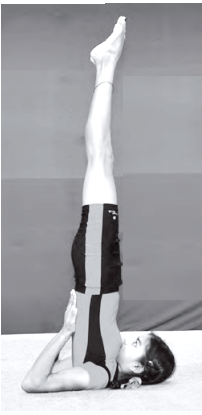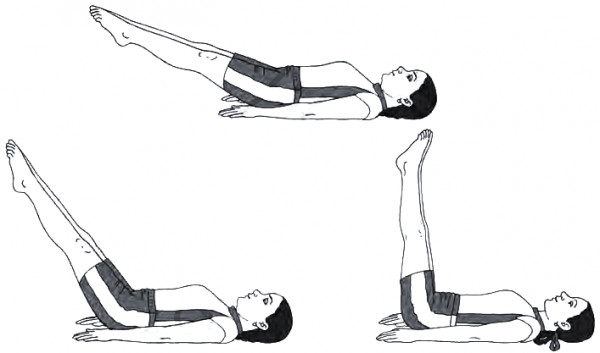Sarvangasana comprises three words: sarva, anga and asana. In Sanskrit, sarva means ‘whole’ and anga means ‘parts of the body’ and asana means ‘posture’. The posture is called Sarvangasana, because it influences the whole body.

Let us perform Sarvang-asana by following the steps given below:
1. Lie on the back with the hands along the thighs, palms resting on the ground.
2. Pushing down on hands slowly raise both the legs up to 30°. Hold the position for few seconds.
3. Slowly, raise the legs further up to 60° and maintain the position for few seconds.
4. Raise the legs further up to 90° and maintain the position for few seconds.
5. Bend the arms at the elbow and place the hands at the hips. Now, cupping the buttocks with hands raise the buttocks. Raise legs, abdomen and chest up vertically in a straight line with the trunk. Place the palms on your back to support the back.
6. Push the chest forward so that it presses firmly against the chin. Keep the elbows close to each other.
7. Maintain the position comfortably for 5-10 seconds.
8. To come back, lower the spine very slowly along the floor. Lower the buttocks with hands supporting the back and bring the buttocks on the ground. Bring the legs up to 90° and stop there. Place the hands firmly on the ground close to the body. Lower the legs still up to 60° and 30° and then slowly on the ground and relax.

Remember the following points:
| Dos |
Don’ts |
| Movements of the legs should be very slow, stopping at different angles. |
Avoid bending the legs. |
| In the final position, keep the legs vertical in a straight line with the trunk. |
Avoid jerky action in assuming the final position or returning from it. |
| Support the back with your hands. |
|
Benefits
- It regulates the thyroid function.
- It helps in increasing the circulation of blood to the brain.
- It strengthens the neck region.
- It helps in managing problems related to endocrine glands.
Limitation
- Those suffering from high blood pressure, epilepsy, pain in neck and lumber region, excessive obesity and cardiovascular complaint should not practise it.